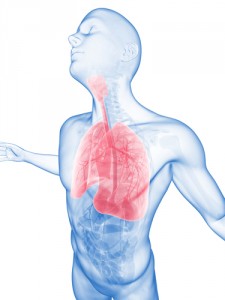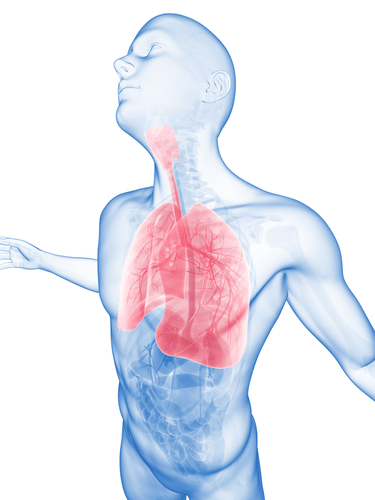 Researchers recently created a new type of breathalyzer, a device that is able to detect lung cancer and evaluate the severity of the disease from just one breath into a tube. The analyzer, which identifies the disease accurately in four out of five cases, was presented at the American Society of Clinical Oncology (ASCO) meeting in Chicago.
Researchers recently created a new type of breathalyzer, a device that is able to detect lung cancer and evaluate the severity of the disease from just one breath into a tube. The analyzer, which identifies the disease accurately in four out of five cases, was presented at the American Society of Clinical Oncology (ASCO) meeting in Chicago.
“Cancer cells not only have a different and unique smell or signature, you can even discriminate between subtypes and determine disease burden,” said study author Dr. Nir Peled, an oncologist at the Davidoff Cancer Center in Israel. “The more tumor you have, the more robust signature you produce.”
A breath test for lung cancer has an “exciting” potential, according to Dr. Jyoti Patel, an ASCO spokeswoman and an oncologist at the Robert H. Lurie Comprehensive Cancer Center of Northwestern University in Chicago. Early diagnoses could improve substantially the survival rate, since lung cancer’s symptoms are imperceptible until the disease is very advanced and incurable.
“This could totally revolutionize lung cancer screening and diagnosis by providing a nontraumatic, easy, cheap approach to early detection and differentiation of lung cancer,” said study co-author Dr. Fred Hirsch, an investigator at the University of Colorado Cancer Center and professor at the University Of Colorado School Of Medicine in Denver.
Lung cancer tumors generate volatile organic compounds, which are chemicals that evaporate into the air and create a distinct scent profile. Some known technologies are already able to detect these particles to one part per trillion, which was the starting point for this research. The study included 358 patients in the US and Israel. 213 suffered from lung cancer, in 143 cases advanced stage, and the other 145 didn’t.
Whenever a patient blew into a balloon, it triggered a very sensitive gold nanoparticle sensor network. The particles trapped by the sensor were then analyzed in the Technion Institute laboratory in Haifa, Israel. The study was accurate in identifying the disease between 82 and 85 percent of the time. In distinguishing early and advanced lung cancer, the device was accurate in 79 percent of the time.
“We’re hoping to have a device that would be able to give you a go/no go result — hey buddy, something’s wrong, go get an X-ray,” Peled said. The breathalyzer could be a low-cost way of understand the patients who definitely don’t have cancer and the ones who need more exams.
Boston-based Alpha Szenszor has already licensed the technology, and the launch into the market is expected within the next few years. However, the device has yet to be verified, which means the studies presented at the ASCO meeting were only preliminary and the researchers will have now to publish it a peer-reviewed journal. Other investigations have been conducted in order to use the scent of cancer cells to detect the disease. In 2011, for example, a study sought to train dogs to sniff lung cancer in human breath.
Lung cancer is the most deadly cancer in the United States and, according to the U.S. Centers For Disease Control and Prevention, the disease killed 158,248 people alone in 2010.

